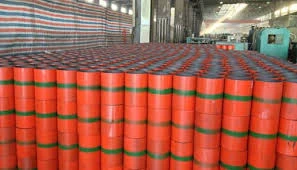- Afrikaans
- Albanian
- Amharic
- Arabic
- Armenian
- Azerbaijani
- Basque
- Belarusian
- Bengali
- Bosnian
- Bulgarian
- Catalan
- Cebuano
- Corsican
- Croatian
- Czech
- Danish
- Dutch
- English
- Esperanto
- Estonian
- Finnish
- French
- Frisian
- Galician
- Georgian
- German
- Greek
- Gujarati
- Haitian Creole
- hausa
- hawaiian
- Hebrew
- Hindi
- Miao
- Hungarian
- Icelandic
- igbo
- Indonesian
- irish
- Italian
- Japanese
- Javanese
- Kannada
- kazakh
- Khmer
- Rwandese
- Korean
- Kurdish
- Kyrgyz
- Lao
- Latin
- Latvian
- Lithuanian
- Luxembourgish
- Macedonian
- Malgashi
- Malay
- Malayalam
- Maltese
- Maori
- Marathi
- Mongolian
- Myanmar
- Nepali
- Norwegian
- Norwegian
- Occitan
- Pashto
- Persian
- Polish
- Portuguese
- Punjabi
- Romanian
- Russian
- Samoan
- Scottish Gaelic
- Serbian
- Sesotho
- Shona
- Sindhi
- Sinhala
- Slovak
- Slovenian
- Somali
- Spanish
- Sundanese
- Swahili
- Swedish
- Tagalog
- Tajik
- Tamil
- Tatar
- Telugu
- Thai
- Turkish
- Turkmen
- Ukrainian
- Urdu
- Uighur
- Uzbek
- Vietnamese
- Welsh
- Bantu
- Yiddish
- Yoruba
- Zulu
Understanding the Importance of Tubing and Casing in Oil and Gas Operations
Understanding Tubing and Casing in Oil and Gas Operations
In the world of oil and gas extraction, the terms tubing and casing are pivotal to the successful operation of wells. Both serve essential functions in ensuring the safety, efficiency, and productivity of drilling operations. This article delves into the definitions, purposes, and significance of tubing and casing in the oil and gas industry.
What is Casing?
Casing is a series of steel pipes that are inserted into a drilled well to protect the integrity of the wellbore. Essentially, it acts as a structural backbone for the well, ensuring it maintains its shape and does not collapse due to geological pressures or other external forces. Casing is set at various depths according to the geological formations encountered during drilling. The installation process involves cementing the casing to the borehole walls to create a secure seal, which helps prevent fluids from migrating between different geological layers, and protects groundwater formations from contamination.
There are several types of casing, namely surface casing, intermediate casing, and production casing. Surface casing is the first line of defense, typically extending from the surface to a depth that ensures the protection of freshwater zones. Intermediate casing provides additional pressure management in challenging geological formations, while production casing serves as the conduit through which hydrocarbons are extracted during the production phase. Each type of casing is designed to withstand specific pressures and conditions, ensuring the well's stability throughout its life cycle.
What is Tubing?
Tubing, on the other hand, refers to the smaller-diameter pipes that are inserted into the production casing after the well has been completed. Tubing is used to transport the extracted hydrocarbons (oil and gas) from the reservoir to the surface. Unlike casing, which is primarily a structural component, tubing is designed specifically to facilitate the flow of fluids. It has a smooth interior surface that reduces friction, thus maximizing the efficiency of hydrocarbon transport.
tubing and casing

One of the critical differences between tubing and casing is that tubing can be removed and replaced, whereas casing remains in place once it has been cemented
. This capacity for removal is vital during maintenance operations or when upgrades are necessary due to changes in production methods or to address downhole issues.The Interplay Between Tubing and Casing
In oil and gas operations, the relationship between tubing and casing is symbiotic. Casing provides the foundational support for the well, while tubing allows for efficient extraction of resources. When designing a well, engineers carefully consider the characteristics of both tubing and casing to optimize production and ensure safety.
Choosing the right materials is critical in both cases. The materials must withstand a range of conditions, including high pressures, corrosive environments, and fluctuating temperatures. Failures in either tubing or casing can lead to disastrous consequences, including blowouts, leaks, and environmental contamination. Thus, rigorous testing and adherence to industry standards are essential during the selection and installation of both components.
Conclusion
In summary, tubing and casing are integral components of oil and gas wells, each serving distinct but interrelated functions. Casing provides structural integrity and protection against geological pressures, while tubing facilitates the efficient flow of hydrocarbons to the surface. Understanding the roles and differences between these two elements is crucial for professionals in the field, as well as for regulatory bodies concerned with environmental protection and sustainable practices in the industry.
As technology advances, the methods used within the oil and gas sector continually evolve, emphasizing the importance of innovation in casing and tubing applications. Ensuring their compatibility with new extraction techniques will be vital for maximizing productivity while maintaining safety and environmental stewardship. Ultimately, a thorough grasp of tubing and casing systems significantly contributes to the overall efficiency and sustainability of oil and gas operations.
-
Tubing Pup Joints: Essential Components for Oil and Gas OperationsNewsJul.10,2025
-
Pup Joints: Essential Components for Reliable Drilling OperationsNewsJul.10,2025
-
Pipe Couplings: Connecting Your World EfficientlyNewsJul.10,2025
-
Mastering Oilfield Operations with Quality Tubing and CasingNewsJul.10,2025
-
High-Quality Casing Couplings for Every NeedNewsJul.10,2025
-
Boost Your Drilling Efficiency with Premium Crossover Tools & Seating NipplesNewsJul.10,2025







